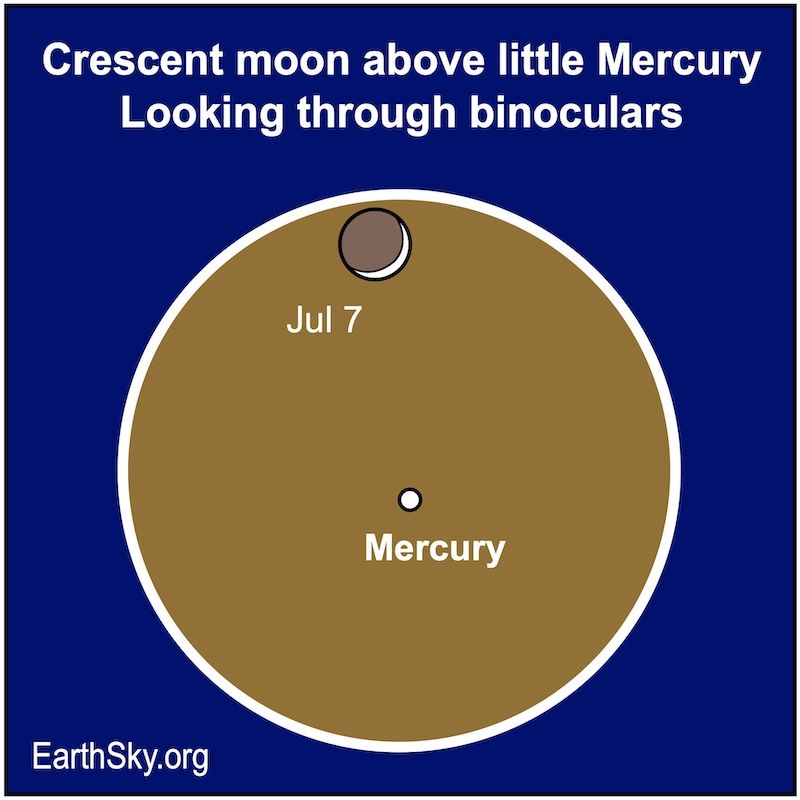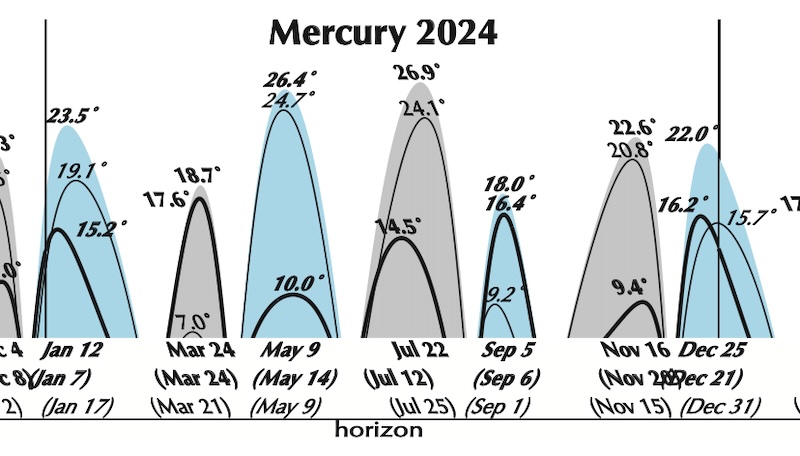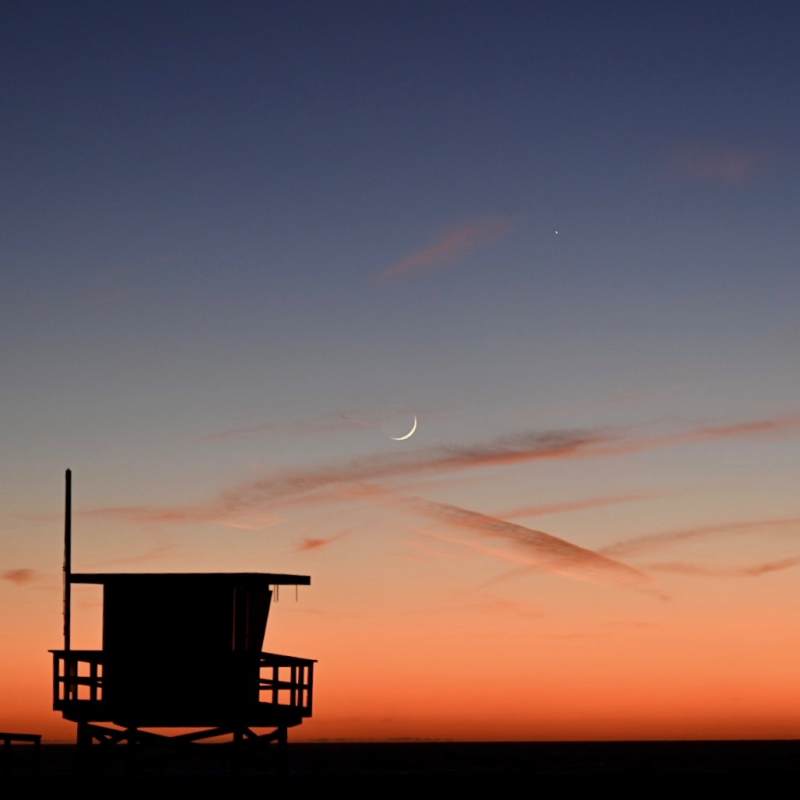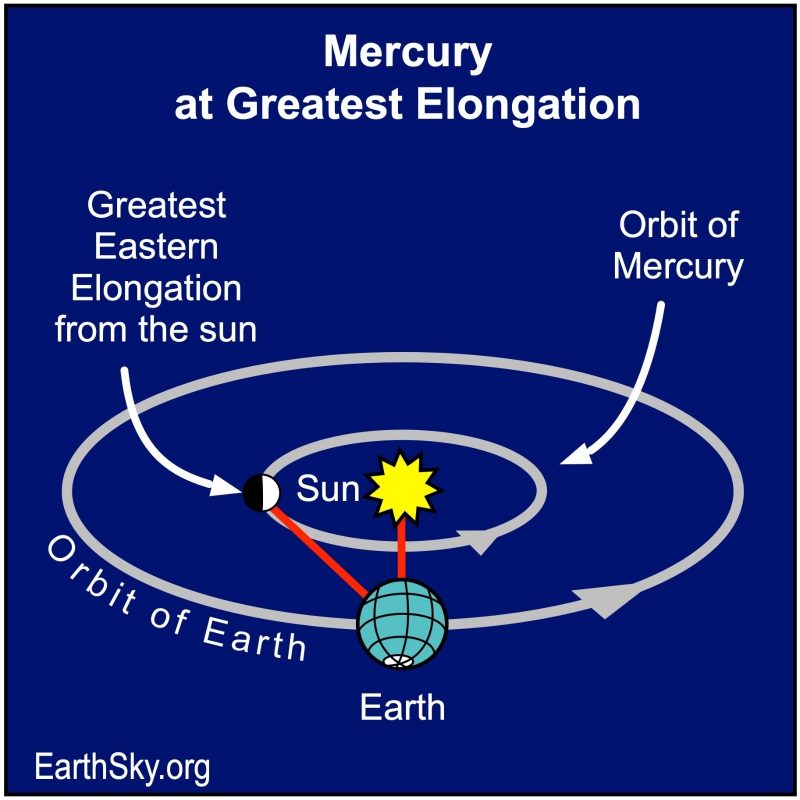
- Gas giant exoplanet HD 189733 b smells like rotten eggs, astronomers say. The pungent odor is due to the gas hydrogen sulfide in this world’s atmosphere.
- The amount of hydrogen sulfide is similar to that in the atmosphere of Jupiter.
- The discovery provides clues as to how gas giant planets form and evolve.
When studying distant exoplanets – or worlds orbiting other stars – astronomers examine what they look like, how big and massive they are, what kind of atmosphere they have and more. But what about how they smell? We now know that at one exoplanet, at least, really stinks … at least according to our human sense of smell. On July 8, 2024, astronomers at Johns Hopkins University in Baltimore, Maryland, said that the Jupiter-sized exoplanet HD 189733 b smells like rotten eggs, thanks to hydrogen sulfide in its atmosphere. They used NASA’s James Webb Space Telescope to make the observations.
The researchers published their peer-reviewed findings in Nature on July 8, 2024.
Meet giant exoplanet HD 189733 b
Discovered in 2005, HD 189733 b is a gas giant exoplanet about the same size as Jupiter. Only 64 light-years from Earth, it is the closest known hot Jupiter-type exoplanet that transits in front of its star as seen from Earth. This makes it ideal for atmospheric study by astronomers. Hot Jupiters are gas giants that orbit very close to their stars, unlike Jupiter and Saturn in our solar system.
The planet orbits 13 times closer to its star than Mercury does to our own sun. It orbits its star in only two days.
The stinky exoplanet’s atmosphere contains carbon dioxide, carbon monoxide, oxygen and water. Since it is so close to its star, it is scorching hot, with deadly weather. Temperatures reach 1,700 degrees Fahrenheit (930 C) and winds howl at 5,000 mph (8,000 kph). On this world, it doesn’t rain water, it rains tiny particles of glass. The extreme winds blow the glass sideways as it falls.
But there’s something else on HD 189733 b, which in fact makes up most of its atmosphere: hydrogen sulfide. This is why the planet smells so bad.
Stinky exoplanet smells like rotten eggs
Hydrogen sulfide is known for being a smelly gas. On Earth, it is one of many gases released by volcanic eruptions. Scientists didn’t know that they would find it on HD 189733 b, even though they predicted it should be there. Guangwei Fu, an astrophysicist at Johns Hopkins, was the lead author of the new study. He said:
Hydrogen sulfide is a major molecule that we didn’t know was there. We predicted it would be, and we know it’s in Jupiter, but we hadn’t really detected it outside the solar system. We’re not looking for life on this planet because it’s way too hot, but finding hydrogen sulfide is a stepping stone for finding this molecule on other planets and gaining more understanding of how different types of planets form.
Clues to planetary formation
Hydrogen sulfide is a central part of the sulfur cycle, the biogeochemical cycle of sulfur on Earth. The hydrogen sulfide discovery will help scientists learn more about how planets form. Sulfur is an essential part of that process, as Fu explained:
Sulfur is a vital element for building more complex molecules, and – like carbon, nitrogen, oxygen and phosphate – scientists need to study it more to fully understand how planets are made and what they’re made of.
Webb will help scientists detect and study suffer and hydrogen sulfide in other gas giant exoplanets, too. Fu said:
Say we study another 100 hot Jupiters and they’re all sulfur enhanced. What does that mean about how they were born and how they form differently compared to our own Jupiter?

No methane
While Webb confirmed hydrogen sulfide on HD 189733 b, it also established a lack of methane. Astronomers had suspected that the planet likely wouldn’t have much, if any, methane, due to its hot temperatures. Fu said:
We had been thinking this planet was too hot to have high concentrations of methane, and now we know that it doesn’t.
Heavy metals similar to Jupiter
Webb also found heavy metals in similar amounts to those on Jupiter. In general, heavy metals are generally defined as metallic elements with relatively high densities, atomic weights or atomic numbers. Fu said:
This Jupiter-mass planet is very close to Earth and has been very well studied. Now we have this new measurement to show that indeed the metal concentrations it has provide a very important anchor point to this study of how a planet’s composition varies with its mass and radius.
The finding is interesting, since, in our solar system, the ice giants Uranus and Neptune contain more heavy metals than the gas giants Jupiter and Saturn. Scientists say this means that Uranus and Neptune accumulated more ice, rock and other heavy elements relative to gases like hydrogen and helium when they were first forming. Since the amount of heavy metals on HD 189733 b is similar to Jupiter, this is consistent with what we know so far about how planets form. Fu added:
The findings support our understanding of how planets form through creating more solid material after initial core formation and then are naturally enhanced with heavy metals.
The researchers now plan to study additional exoplanets and see how they compare to the stinky exoplanet HD 189773 b.
Bottom line: Astronomers say that the giant stinky exoplanet HD 189733 b smells so bad – like rotten eggs – thanks to hydrogen sulfide in its atmosphere.
Source: Hydrogen sulfide and metal-enriched atmosphere for a Jupiter-mass exoplanet
Read more: Gas-giant exoplanets cling close to their parent stars
Read more: 1st direct image of 2 giant exoplanets orbiting a sunlike star
The post Giant stinky exoplanet smells like rotten eggs first appeared on EarthSky.
from EarthSky https://ift.tt/0WuwX6s

- Gas giant exoplanet HD 189733 b smells like rotten eggs, astronomers say. The pungent odor is due to the gas hydrogen sulfide in this world’s atmosphere.
- The amount of hydrogen sulfide is similar to that in the atmosphere of Jupiter.
- The discovery provides clues as to how gas giant planets form and evolve.
When studying distant exoplanets – or worlds orbiting other stars – astronomers examine what they look like, how big and massive they are, what kind of atmosphere they have and more. But what about how they smell? We now know that at one exoplanet, at least, really stinks … at least according to our human sense of smell. On July 8, 2024, astronomers at Johns Hopkins University in Baltimore, Maryland, said that the Jupiter-sized exoplanet HD 189733 b smells like rotten eggs, thanks to hydrogen sulfide in its atmosphere. They used NASA’s James Webb Space Telescope to make the observations.
The researchers published their peer-reviewed findings in Nature on July 8, 2024.
Meet giant exoplanet HD 189733 b
Discovered in 2005, HD 189733 b is a gas giant exoplanet about the same size as Jupiter. Only 64 light-years from Earth, it is the closest known hot Jupiter-type exoplanet that transits in front of its star as seen from Earth. This makes it ideal for atmospheric study by astronomers. Hot Jupiters are gas giants that orbit very close to their stars, unlike Jupiter and Saturn in our solar system.
The planet orbits 13 times closer to its star than Mercury does to our own sun. It orbits its star in only two days.
The stinky exoplanet’s atmosphere contains carbon dioxide, carbon monoxide, oxygen and water. Since it is so close to its star, it is scorching hot, with deadly weather. Temperatures reach 1,700 degrees Fahrenheit (930 C) and winds howl at 5,000 mph (8,000 kph). On this world, it doesn’t rain water, it rains tiny particles of glass. The extreme winds blow the glass sideways as it falls.
But there’s something else on HD 189733 b, which in fact makes up most of its atmosphere: hydrogen sulfide. This is why the planet smells so bad.
Stinky exoplanet smells like rotten eggs
Hydrogen sulfide is known for being a smelly gas. On Earth, it is one of many gases released by volcanic eruptions. Scientists didn’t know that they would find it on HD 189733 b, even though they predicted it should be there. Guangwei Fu, an astrophysicist at Johns Hopkins, was the lead author of the new study. He said:
Hydrogen sulfide is a major molecule that we didn’t know was there. We predicted it would be, and we know it’s in Jupiter, but we hadn’t really detected it outside the solar system. We’re not looking for life on this planet because it’s way too hot, but finding hydrogen sulfide is a stepping stone for finding this molecule on other planets and gaining more understanding of how different types of planets form.
Clues to planetary formation
Hydrogen sulfide is a central part of the sulfur cycle, the biogeochemical cycle of sulfur on Earth. The hydrogen sulfide discovery will help scientists learn more about how planets form. Sulfur is an essential part of that process, as Fu explained:
Sulfur is a vital element for building more complex molecules, and – like carbon, nitrogen, oxygen and phosphate – scientists need to study it more to fully understand how planets are made and what they’re made of.
Webb will help scientists detect and study suffer and hydrogen sulfide in other gas giant exoplanets, too. Fu said:
Say we study another 100 hot Jupiters and they’re all sulfur enhanced. What does that mean about how they were born and how they form differently compared to our own Jupiter?

No methane
While Webb confirmed hydrogen sulfide on HD 189733 b, it also established a lack of methane. Astronomers had suspected that the planet likely wouldn’t have much, if any, methane, due to its hot temperatures. Fu said:
We had been thinking this planet was too hot to have high concentrations of methane, and now we know that it doesn’t.
Heavy metals similar to Jupiter
Webb also found heavy metals in similar amounts to those on Jupiter. In general, heavy metals are generally defined as metallic elements with relatively high densities, atomic weights or atomic numbers. Fu said:
This Jupiter-mass planet is very close to Earth and has been very well studied. Now we have this new measurement to show that indeed the metal concentrations it has provide a very important anchor point to this study of how a planet’s composition varies with its mass and radius.
The finding is interesting, since, in our solar system, the ice giants Uranus and Neptune contain more heavy metals than the gas giants Jupiter and Saturn. Scientists say this means that Uranus and Neptune accumulated more ice, rock and other heavy elements relative to gases like hydrogen and helium when they were first forming. Since the amount of heavy metals on HD 189733 b is similar to Jupiter, this is consistent with what we know so far about how planets form. Fu added:
The findings support our understanding of how planets form through creating more solid material after initial core formation and then are naturally enhanced with heavy metals.
The researchers now plan to study additional exoplanets and see how they compare to the stinky exoplanet HD 189773 b.
Bottom line: Astronomers say that the giant stinky exoplanet HD 189733 b smells so bad – like rotten eggs – thanks to hydrogen sulfide in its atmosphere.
Source: Hydrogen sulfide and metal-enriched atmosphere for a Jupiter-mass exoplanet
Read more: Gas-giant exoplanets cling close to their parent stars
Read more: 1st direct image of 2 giant exoplanets orbiting a sunlike star
The post Giant stinky exoplanet smells like rotten eggs first appeared on EarthSky.
from EarthSky https://ift.tt/0WuwX6s
























